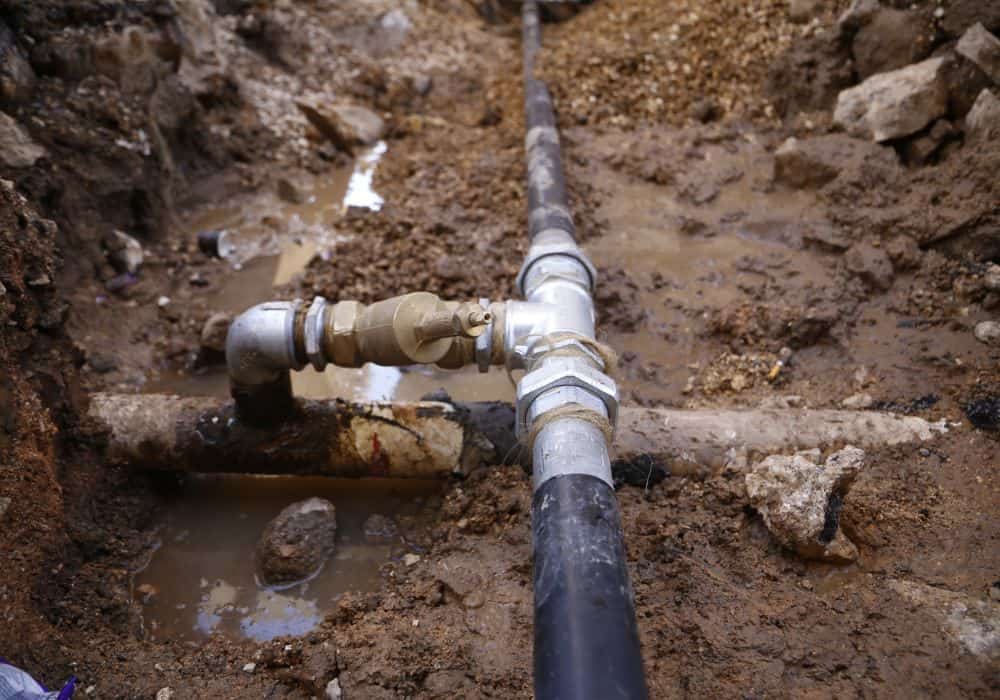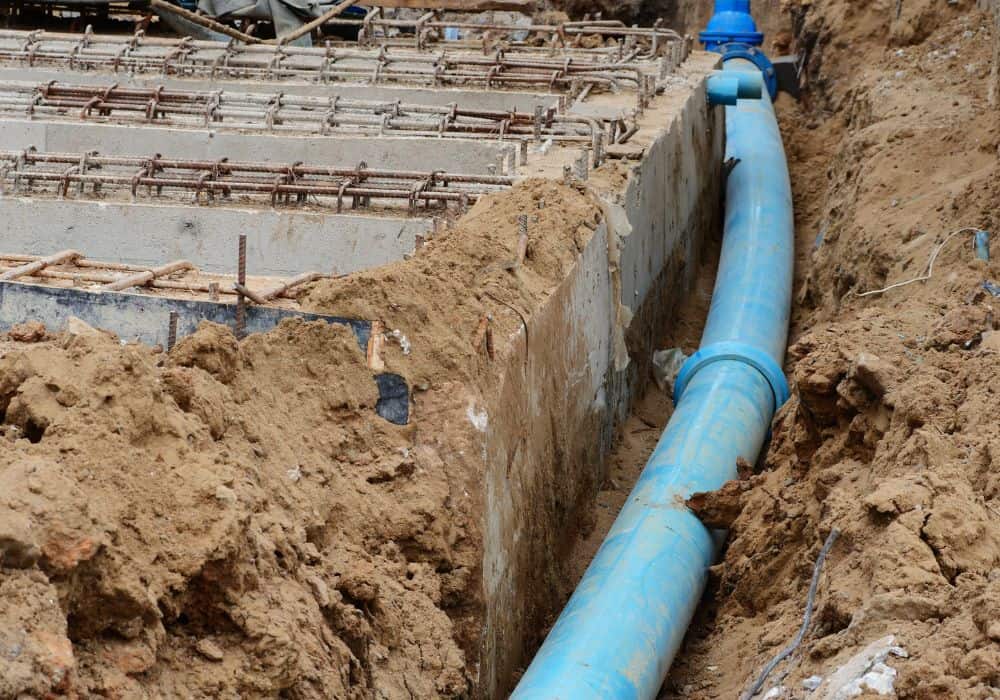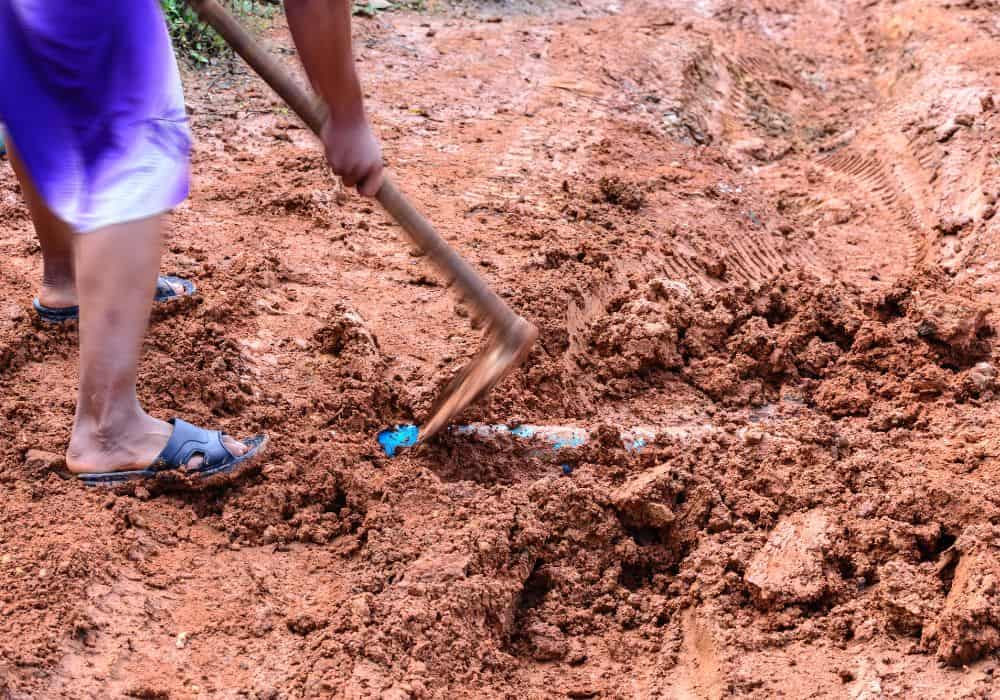If you’ve got a leaky pipe in your house or yard, it’s not just a pain to deal with—it can also be really expensive. If your water bill is already sky-high, having to pay for the cost of fixing a leaky pipe is probably the last thing you want to think about right now. But if left unrepaired, the problem will only get worse and more expensive over time—so what should you do?
To help homeowners with this problem, we put together this step-by-step guide on how to fix a leaking pipe underground.
Tools you might need
- A shovel
- Spade
- A shutoff valve or wrench
- Tarp
- Hammer
- Bucket
- New plumbing pipes
- Gloves (optional)
- Waterproof tape (optional)
- Waterproof glue (optional)
Step-by-step guide fix a leaking water pipe underground

Step 1: find the leak
Before trying anything else, you need to figure out where the leak is coming from.
- The best way to do this is by checking for any wet spots or mold in your yard or around where the pipe runs underground. If there are wet spots near the surface of the ground in or around your yard or garden beds—or if leaves or other debris are floating on top of the water in those areas—then there’s likely an underground leak somewhere nearby.
It may take some time before these signs appear, especially if the leak is at an underground pipe that runs for a long distance. If you’re noticing any of these signs, it’s time to get on the case.
- Get a water meter: If you suspect an underground leak but aren’t sure where it is, it’s time to invest in a home water meter. These handy devices allow you to track your water usage so that you can see if there are any changes when the problem first occurs (like an increase in use).
- Turn off all water sources and then turn them back on one at a time until you find where the water is coming from (this method works best if you have multiple faucets or sinks).
This video has some great tips and tricks you can try if you want to find your underground leak.
Step 2: turn off the water
Once you’ve found out where the leak is located, it’s time to fix it! First thing first: if you’ve got an underground leak somewhere in your plumbing system, you need to do is turn off the main shutoff valve for your home or building. This is usually located near your meter or in an exterior wall of the house.
Once you’ve turned off the water, turn off all other valves and faucets that run under or into that section of pipe—this will prevent them from being damaged as well as help you keep track of which valves are open and which ones aren’t.
Step 3: dig a hole
Once you’ve turned off your water supply, use a shovel or other digging tool to dig out a trench about two feet deep around the leaky pipe (or as deep as necessary). This will give you room to work and see your underground water line without having to go through solid earth from above your lawn.
Then, remove any dirt or weeds that are in the way of your pipe so that you can get a better view of what needs to be done. If you don’t have any tools on hand and need some help fixing this leak, call our team of professional plumbers.
Step 4: remove the damaged pipe

Using a shovel or other digging tool, dig out an area around the entire length of your old pipe. This will make it easier to remove and replace in the next steps. Using a screwdriver or other tool, remove any screws that are holding the damaged section of pipe in place and pull it out of the ground.
Clean out any dirt and debris that has accumulated inside the hole where you removed the leaky pipe: Use a garden hose or other cleaning tool to wash out any dirt that may have gotten into this area during the repair process.
Step 5: measure and cut new pipes
Measure the distance between your leaky pipe and your water meter: This will help you determine how much pipe needs to be replaced so that you can buy enough replacement parts for your repair job. Remember to also measure your diameter to get the perfect fit.
If you have a new section of pipe already cut to size, simply push it into place and secure it with screws. If not, cut one to length using a hacksaw or other cutting tool (PVC pipes are easier to cut through and won’t require a bigger machine). If you don’t have any tools handy to cut PVC pipe with, you can use a utility knife or pair of scissors for this step (but be sure not to damage either side of the plastic).
If the pipe is made out of copper or metal, this process gets more complicated. If you have experience with cutting this kind of pipe, you might have to use a torch to cut and solder copper piping, for instance. If you are not sure you are fit for the job, it’s better to call someone who is, as the piping system is important and you don’t want to have to fix it again soon.
Use a hacksaw or other cutting tool to cut the new pipe to the same length as your leaky section. This will ensure that you don’t end up with a too-short or too-long section that could cause problems later on.
Step 6: connect the new pipe to your water meter
Insert one end of the replacement pipe into the opening on top of your water meter and tighten it with a wrench until it is secure. After cleaning both ends of your replacement pipe with sandpaper, apply PVC cement between them and let it dry overnight before using it again.
Step 7: time to test your pipes
Once you have replaced the leaking pipe and 24 hours have passed, test the repair by opening one of your faucets. This should ensure that there aren’t any leaks or other problems with your repair. If water spurts out, turn off all of your faucets and call a plumber to ensure no more leakage in other parts of your system.
If there are any leaks, you’ll need to go back and check your work. Make sure that all of the connections are secure and that there isn’t any loose pipe left over after cutting it to size.
Step 8: refill the hole

After fixing your pipes and making sure everything works, it’s time to fill the trench with dirt so that it looks as close as possible to how it did before you started working on it.
After fixing your pipes, fill the trench with dirt and tamp it down with a tamper or tamping tool. Make sure that all dirt is compacted tightly around the pipe so that water cannot seep under it anymore. Afterward, flush the system by running all faucets until they’re clear.
When to call a Professional?
If your plumbing project takes a lot more time than you expected or you are running into many problems, there is no shame in calling someone with more experience. Pipes are an essential part of your home and you don’t want a bad job done, because it will ultimately affect your whole life.
Even if you fixed it yourself, it’s still a good idea to call someone who can check it out and ensure the job is done correctly. This way you might save money in the future for even more repairs.
Conclusion
It’s important to know how to fix a leaking water pipe underground because it can cause serious damage if left unchecked, which could mean replacing expensive parts or even worse, having to dig up your entire yard!
Luckily, there are some easy fixes for leaks that are simple enough for anyone to do, and we hoped we cleared out some things for you. And if you still have questions, ask them in the comments.
